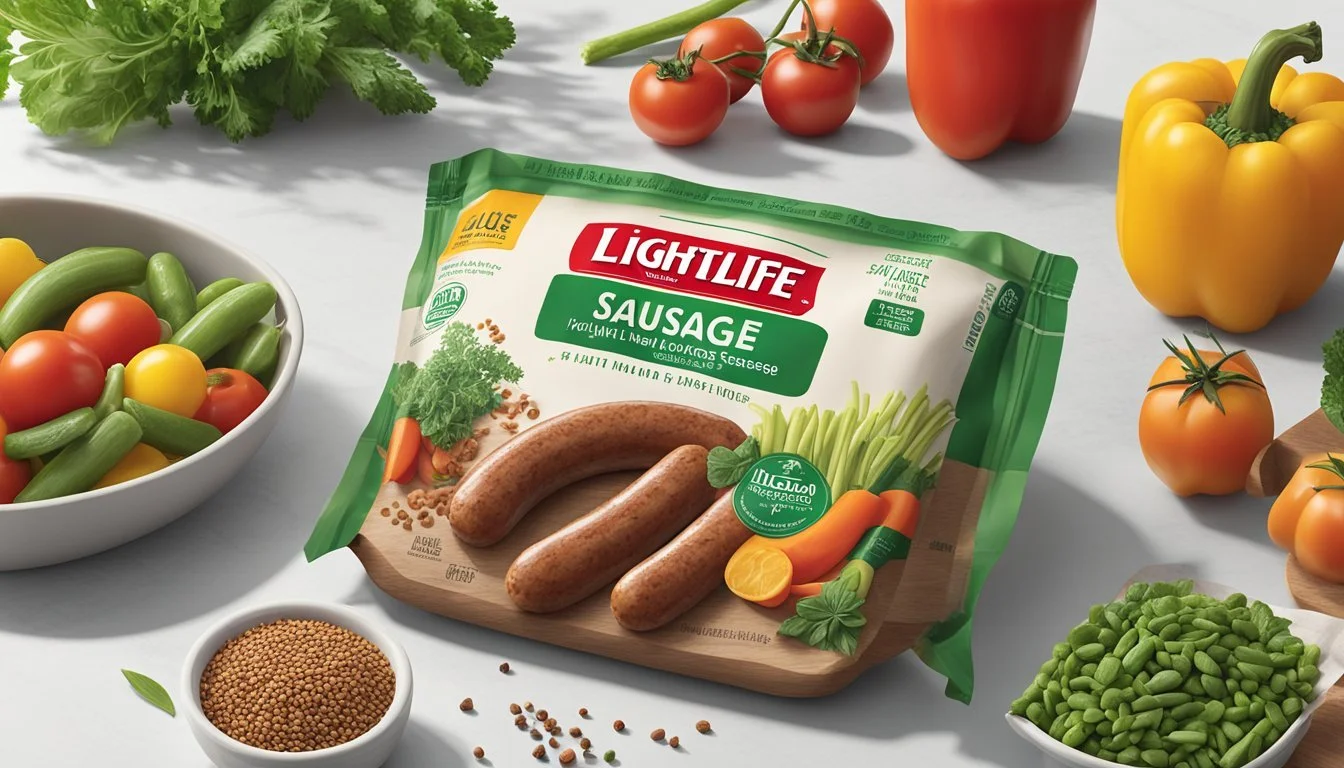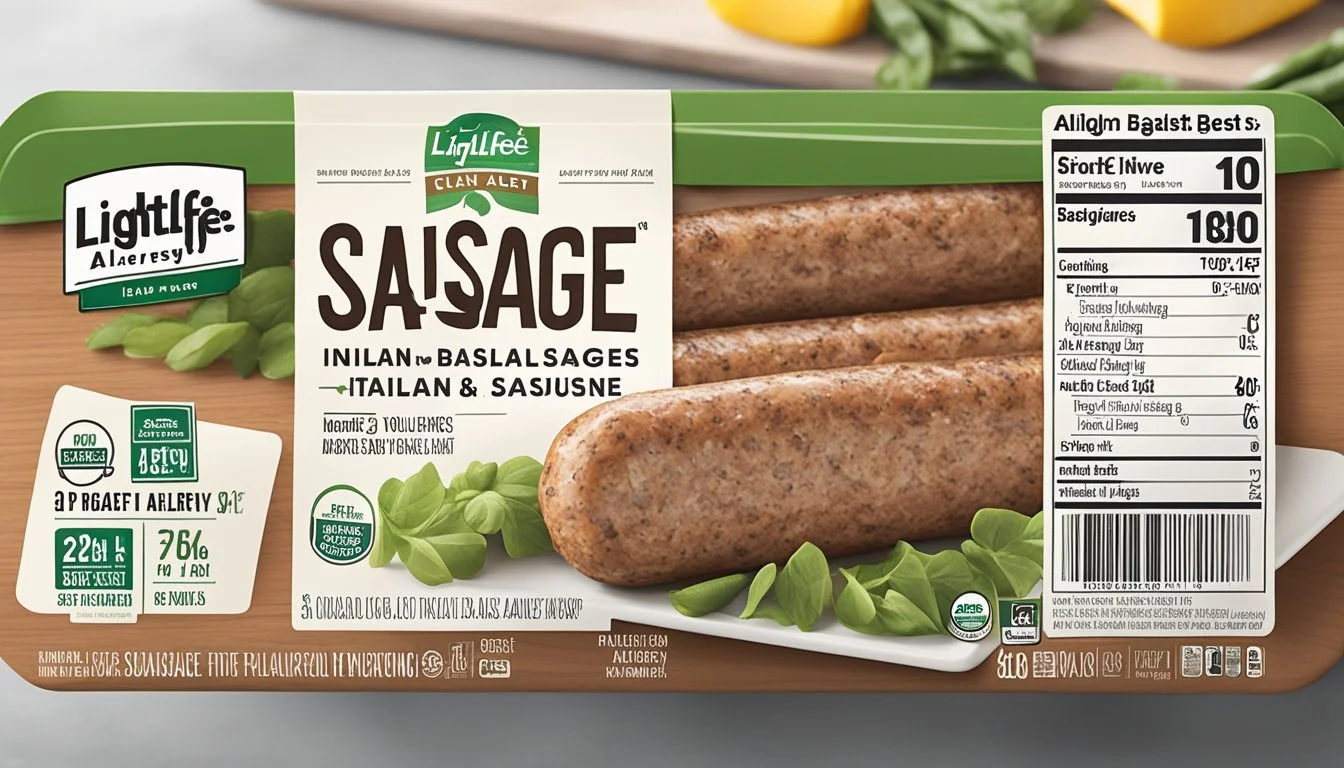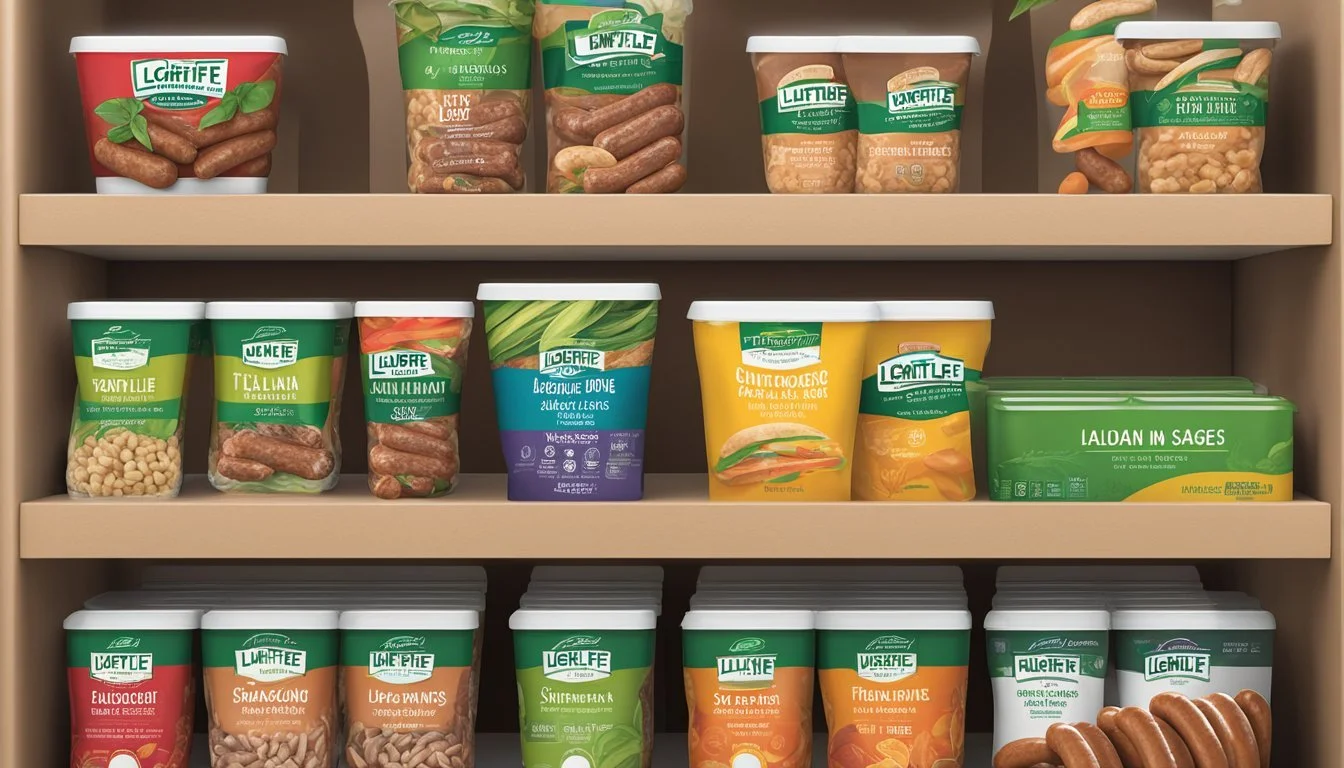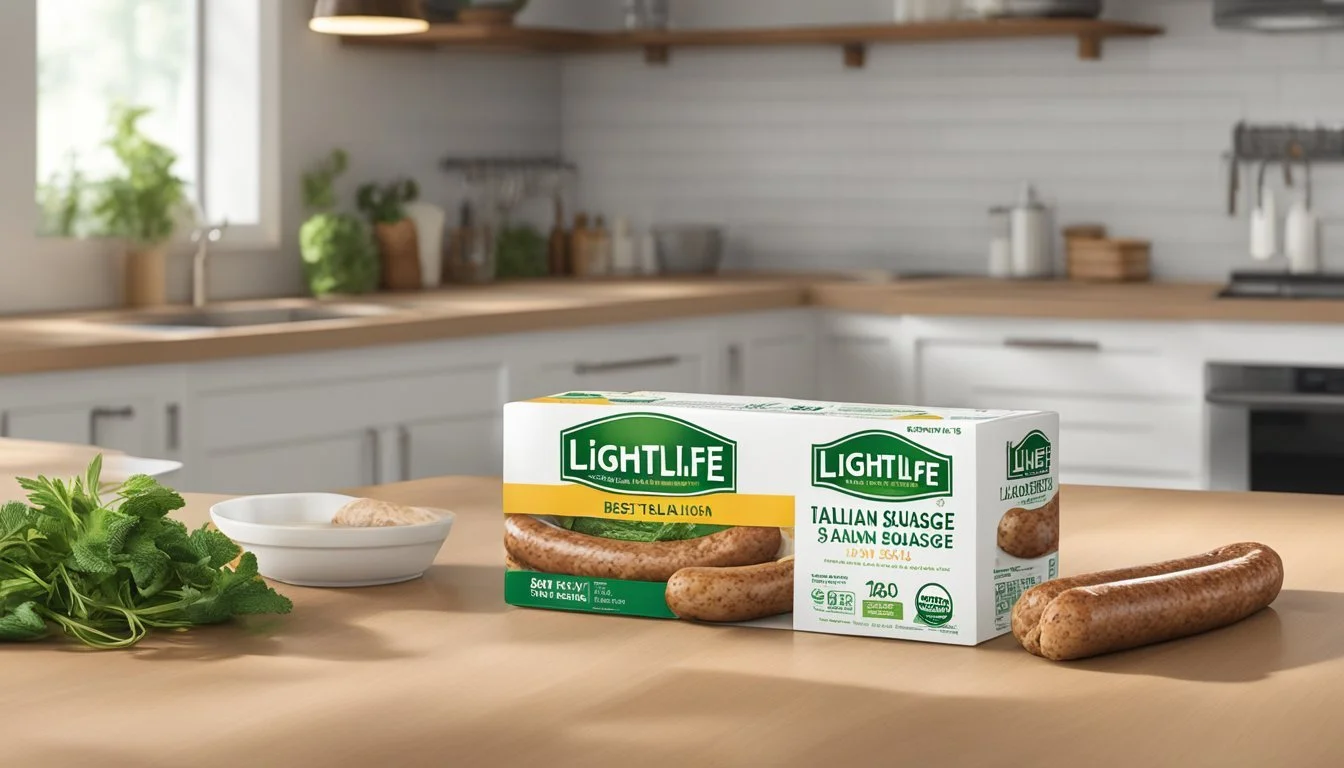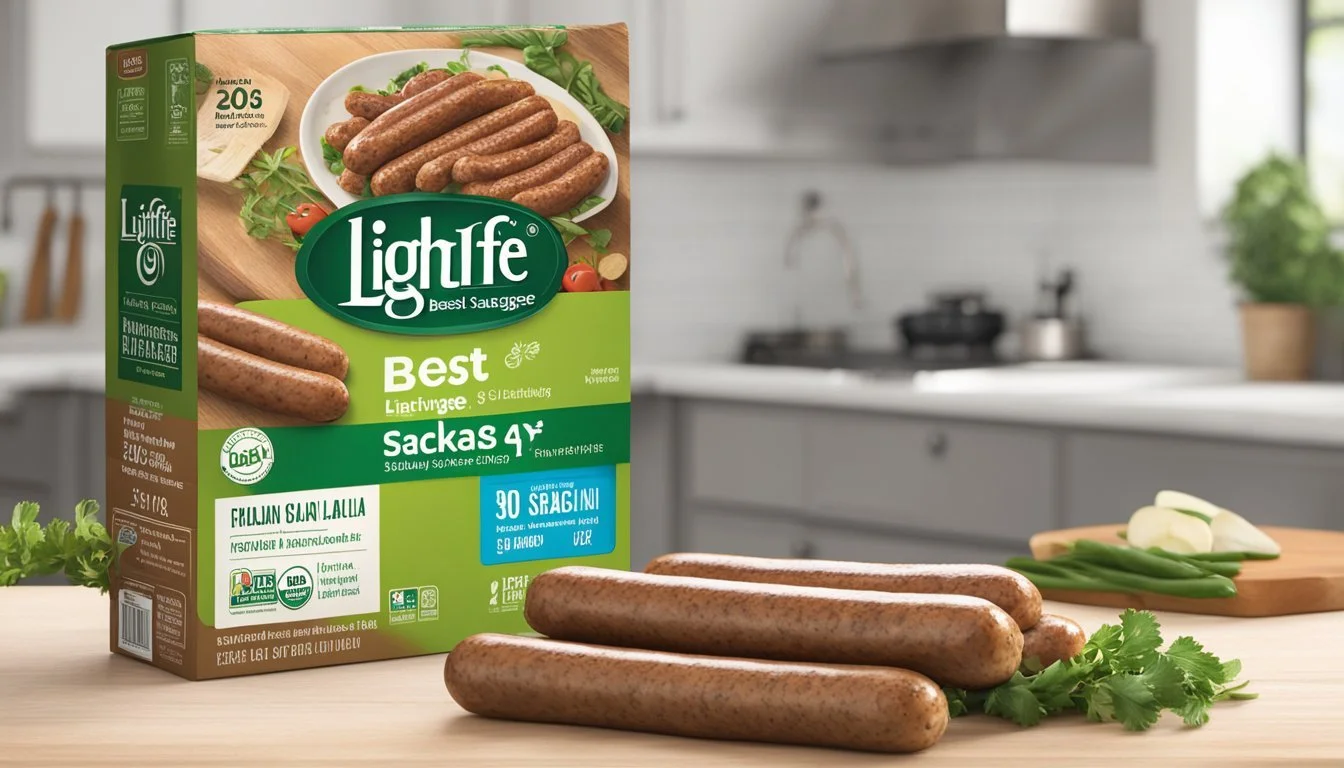How Long Does Lightlife Plant-Based Italian Sausage Last?
Shelf Life Explained
When considering the shelf life of plant-based products, Lightlife Plant-Based Italian Sausage is a popular option for those seeking a meatless alternative. As with any perishable food item, understanding its longevity is key to ensuring freshness and safety. Typically, an unopened package of Lightlife Plant-Based Italian Sausage can be expected to remain fresh in the refrigerator for about a week to 10 days. The actual duration can vary based on storage conditions and whether the product has been opened.
To maintain optimal freshness once opened, it's recommended to consume the plant-based sausage within a shorter timeframe, as exposure to air and moisture can accelerate spoilage. It's crucial to refer to the expiration date provided on the packaging and to store the sausages as per the manufacturer's guidelines. Proper refrigeration is essential in preserving the quality and taste of the product.
The Lightlife Plant-Based Italian Sausage combines a blend of herbs and spices with ingredients like pea protein, canola oil, and various plant fibers to replicate the experience of traditional Italian sausage. It caters to various dietary preferences, being both gluten-free and soy-free, offering 14 grams of plant protein per serving, making it a nutritious option for those looking to incorporate more plant-based proteins into their meals.
Product Overview
Lightlife's Plant-Based Italian Sausages offer a meat-free alternative designed to cater to the growing demand for plant-based options. These sausages incorporate a blend of high-quality proteins such as pea protein, fava bean protein, and brown rice protein. They are crafted to provide a satisfying taste and texture that is reminiscent of traditional meat products.
The sausages come encased in a vegan casing. The combination of spices, red bell peppers, beet powder, and paprika extract contributes to their juicy flavors, aiming to please even the most discerning palates. Lightlife has formulated this product to be versatile, making it a suitable addition to a favorite pasta dish or serving as a standalone dish.
Key Ingredients:
Proteins: Pea protein, fava bean protein, brown rice protein
Texture and Casing: Vegan casing, typically made from calcium alginate, derived from seaweed
Flavor Profile: Spices, red bell peppers, and dried spices such as paprika extract and dried red bell peppers
Umami Component: Dried torula yeast
Cooking Method:
The sausages can be cooked to preference, with pan-frying being a recommended method to achieve a browned and appetizing exterior. They are designed to be easy to prepare, providing a convenient and enjoyable eating experience.
Dietary Information:
Lightlife's Plant-Based Italian Sausages cater to individuals seeking a plant-based diet, including those who follow a vegan lifestyle. They neatly sidestep common meat allergens such as wheat gluten, making them a thoughtful choice for consumers with dietary restrictions.
Lightlife emphasizes the importance of clean ingredients and transparent practices, aligning with conscious consumerism that values health, taste, and ethical food choices.
Shelf Life and Storage
When consumers purchase LightLife's Plant-Based Italian Sausage, they often find it in the refrigerated section. The company suggests keeping it refrigerated at home as well, whether it's unopened or after opening.
In terms of how long the plant-based sausage lasts, when kept in the fridge, an unopened package will usually remain fresh until the "best by" date found on the packaging. Once opened, it's advisable to consume the product within a week to ensure food safety and quality.
For those wishing to extend the shelf life, freezing is an option. When frozen, the Italian sausage can retain quality for up to six months. Here is a simple guide:
State Shelf Life Refrigerated (Unopened) Up to "best by” date Refrigerated (Opened) Within a week Frozen Up to six months
It is critical to ensure the sausages are properly sealed and stored in airtight containers or freezer-safe bags to prevent freezer burn and maintain quality. Thawing should occur in the refrigerator, and once thawed, the sausages should not be refrozen.
As with any perishable food, if there's a presence of mold or a noticeable off odor or taste, it is best to discard the product immediately to prevent any foodborne illness. Proper storage and handling are key to maximize the shelf life and safety of LightLife Plant-Based Italian Sausage.
Preparation Guidelines
When preparing LightLife Plant-Based Italian Sausage, it is essential to adhere to the cooking instructions to ensure the sausages are properly heated and have a desirable texture. They can then be creatively included in a variety of dishes, including one's favorite pasta dish.
Cooking Instructions
Skillet Method:
Lightly oil a skillet and preheat the sausages over MEDIUM-HIGH heat.
Cover and brown them for 5 minutes, turning them once a minute.
Reduce to low heat and cook for an additional 3 minutes until they're hot.
Air Fryer Method:
Preheat the air fryer to 400°F.
Lightly spray the sausages with cooking spray.
Cook for 7 minutes, shaking them halfway through.
Allow the sausages to rest for a couple of minutes after cooking before serving.
Serving Suggestions
With Pasta:
Slice the cooked sausages and mix them into your favorite sauce, simmering together for a few minutes to infuse flavors.
Serve over a bed of al dente pasta.
As-is:
Enjoy the sausages on their own, complemented with a side of mixed vegetables or salad for a simple yet satisfying meal.
Health and Nutrition
Lightlife's Plant-Based Italian Sausages provide a meat-free alternative for those seeking options aligned with a vegetarian or vegan lifestyle. Nutritional facts per serving indicate that these sausages are designed to provide a balance of protein, carbohydrates, and fats. Typically, a serving would contain a significant amount of pea protein, an ingredient that serves as the primary protein source in the product.
Regarding allergen information, these sausages are an excellent option for those who have wheat allergies or celiac disease, as they are crafted without wheat-based ingredients. However, consumers must always review the product label for the most up-to-date allergen information.
The nutritional profile for a serving of Lightlife Plant-Based Italian Sausage is generally as follows:
Calories: Varied based on serving size
Net Carbs: Usually less than 20g after fiber is subtracted
Protein: Pea and fava bean proteins are primary sources
Fat: Contains canola oil among other fats
It is essential for consumers to understand that although plant-based, these sausages should still be consumed in moderation within a well-rounded diet. The inclusion of canola oil, and the absence of soy protein isolate in some products, make them suitable for those avoiding soy.
Finally, Lightlife's sausages are free from cholesterol and trans fats, contributing to their positioning as a heart-healthier alternative to traditional meat-based sausages. The use of simple, familiar ingredients can resonate with consumers looking for transparent food choices.
Safety and Allergy Information
When considering the safety and allergy information for LightLife Plant-Based Italian Sausages, consumers should be aware of the product's ingredients and how they may impact those with specific food allergies.
Allergy Advice: LightLife's Plant-Based Italian Sausages contain pea protein, which can be a concern for individuals with allergies to legumes. Legumes include all beans, peas, lentils, and peanuts. While not a common allergen like soy or wheat, pea protein is worth noting for persons with legume allergies.
Ingredients to Consider:
Pea Protein: May cause allergic reactions in individuals with legume allergies.
Natural Flavors: Can be derived from various sources; those with allergies should contact the manufacturer for specific information.
Canola Oil: Generally not a common allergen, but can be genetically modified or processed in facilities that handle soy, which could be problematic for those with soy allergies.
Modified Cellulose: Derived from plant fiber and not known to be a common allergen.
Citrus Fiber: It’s inclusive as a fiber source and poses a low risk for allergies.
While the product does not specifically list wheat or soybean oil in its ingredients, it is recommended for individuals with gluten or soy allergies to always check labels as manufacturers may change their formulation. Furthermore, the term "natural flavors" can encompass a wide range of ingredients, and those with extreme sensitivities should inquire directly with LightLife for detailed information regarding the source of these flavors.
Remember, LightLife Plant-Based Italian Sausages undergo pasteurization which fully cooks the product, increasing safety by reducing the risk of pathogens. Despite this, the manufacturer still advises cooking the sausages according to the instructions on the packaging to ensure optimal safety and taste.
Product Variants and Flavors
Lightlife offers a range of plant-based products that cater to varying tastes and preferences. Their Plant-Based Italian Sausage is a popular choice for those seeking a meat alternative with an Italian flair. The flavor profile of this product includes a blend of spices that are typical of traditional Italian sausage, making it a versatile ingredient in dishes like pasta, pizza, and stews.
In addition to the Italian sausage, Lightlife's portfolio includes Plant-Based Burgers, Hot Dogs, and Tempeh. The hot dogs provide a classic taste suitable for grilling, while the burgers offer a hearty option for those who enjoy a thicker, juicier patty. The tempeh is a fermented soy product, a staple in vegetarian cuisine, appreciated for its nutty flavor and firm texture.
Beyond Meat and Field Roast are competitor brands that also offer plant-based Italian sausage among other plant-based meat alternatives. Beyond Meat is known for its burgers that mimic the taste and texture of beef, while Field Roast presents a variety of flavors in their sausage lineup, including an Italian garlic and fennel variety.
Here's a succinct overview of the plant-based Italian sausage offerings:
Lightlife: Italian sausage with spices typical of Italian cuisine.
Beyond Meat: Offers an Italian-style sausage with a focus on replicating the traditional meat texture.
Field Roast: Italian sausage characterized by garlic and fennel seasoning.
Each brand endeavors to provide consumers with a variety of flavors that adhere to a plant-based diet without compromising on the traditional flavors they know and love.
Comparative Analysis
This section provides a focused comparison on the shelf-life and qualities of Lightlife Plant-Based Italian Sausage relative to its competitors. Specifically, the analysis will compare it against other brands, Beyond Meat, and Field Roast.
Against Other Brands
Lightlife Plant-Based Italian Sausage typically offers a refrigerator shelf-life of approximately 7 to 10 days when unopened. In a market that includes multiple brands of plant-based sausages, this durability is competitive but can vary based on the brand and storage conditions. Other brands may have shorter or longer shelf lives, whereby some use preservatives that extend freshness, while others prioritize fewer additives, which might lead to a shorter shelf-life.
Beyond Meat Comparison
When placed head-to-head with Beyond Meat, the Lightlife brand holds its own; Beyond typically suggests a similar refrigerator shelf-life for their plant-based sausages. While appealing to consumers through their taste and texture, Beyond Meat's sausages are known for their quality and shelf stability, which Lightlife matches effectively.
Field Roast Evaluation
Comparing to Field Roast, another popular choice in plant-based sausages, Lightlife's products generally align with the shelf-life offered by Field Roast selections. Field Roast's emphasis on artisanal flavors positions them uniquely, yet without compromising the practical aspect of shelf-life that consumers also heavily consider in their purchasing decision.
Storage Tips
When storing Lightlife plant-based Italian sausages, one should ensure that they follow proper storage guidelines to maintain the quality and safety of the product. These sausages are usually refrigerated and it's recommended that they remain in the fridge for optimal freshness.
Refrigeration:
Duration: Keep the sausages in the refrigerator if they are to be consumed within a few days. Companies like Lightlife suggest refrigeration as the ideal storage method.
Temperature: Store at or below 40°F (4°C) to maintain their freshness and prevent spoilage.
Freezing:
Duration: For longer storage, freezing the sausages can extend their shelf life. They can last up to 6 months in the freezer.
Packaging: Before freezing, place the sausages in an airtight container or wrap them securely in freezer-safe materials to protect against freezer burn and to preserve their taste and texture.
Handling Opened Packages:
Once opened, the sausages should be consumed within 7 days, even if refrigerated. If one cannot consume them within this timeframe, they should consider freezing them promptly.
Signs of Spoilage:
Always inspect the sausages for mold or an off odor before consumption, as these are clear indicators that the sausages have gone bad and should not be consumed.
By following these guidelines, consumers can ensure their Lightlife plant-based Italian sausages stay fresh and are enjoyable up to their maximum shelf life.
Consumer Reviews
When considering the longevity of Lightlife's Plant-Based Italian Sausage, consumers have voiced differing opinions about the product's quality over time, particularly in reference to taste. One consumer reported a noticeable decline in the enjoyment of the sausage, citing changes in size, dryness, and overall flavor. This feedback suggests that while the product may physically last in storage, its appeal in terms of taste may diminish.
Taste:
Prior Experience: Tasty and juicy with a nice texture.
Current Feedback: Larger, dry, lacking flavor, and has a disagreeable texture.
Purchasing Habits:
Consumers used to buy in bulk and store in the freezer, implying satisfaction with the product's taste and quality over time.
The recent decline in satisfaction has led to the disposal of the product, indicating a significant shift in opinion.
Alternatives:
Due to dissatisfaction, some consumers are actively seeking out new plant-based sausage options that better fulfill their taste expectations.
The change in consumer experience highlights the importance for Lightlife to possibly re-evaluate their product formulation to maintain consumer satisfaction with taste over time. While Lightlife has maintained a versatile reputation in the plant-based market, this feedback points to an area for potential improvement.
Purchase Points and Availability
Consumers can typically find LightLife plant-based Italian sausage in the produce aisle of their local grocery stores. Availability may vary, but several retailers including Publix Super Markets, Smith's Food and Drug, and Instacart carry this product. Shoppers interested in purchasing this plant-based alternative can often select between refrigerated or frozen options, according to individual store offerings.
For Those Looking to Buy:
Location: Look in the produce aisle or the section dedicated to vegetarian and vegan products.
Stock Status: Product availability may differ from store to store, with factors such as location and demand playing a role.
Purchasing Channels: Besides physical retail locations, consumers can use online grocery delivery services like Instacart to order the product.
Contact Information:
Should customers have difficulty locating LightLife plant-based Italian sausages or have further inquiries regarding product availability, they are encouraged to reach out directly to LightLife's customer service.
Phone: 1-800-769-3279 (Available Mon-Fri 8:30am-5:30pm EST)
In summary, while LightLife plant-based Italian sausage is widely available, specifics such as store inventory and the choice between refrigerated or frozen can be subject to change. Consumers are advised to check with local stores or use online grocery services to ensure availability.
Frequently Asked Questions
This section addresses common inquiries about Lightlife plant-based Italian sausage, including its shelf life, best ways to cook it, and health-related concerns.
Longevity and Freshness
How long does unopened Lightlife plant-based Italian sausage last?
Unopened Lightlife plant-based Italian sausage can typically last in the fridge for about 7 to 10 days. It is essential to check the 'best by' date on the packaging for the most accurate information. If frozen, the sausage may last longer, but it is always good practice to consume it before or close to the 'best by' date for optimum freshness.
Cooking Tips
What are the cooking instructions for Lightlife plant-based Italian sausage?
To ensure a properly cooked sausage that’s both safe and enjoyable to eat, one should always follow the cooking instructions provided on the packaging. For example, grilling might require 7-9 minutes, turning frequently, until an internal temperature of 165°F is reached. If preparing from frozen, the sausage should be thawed in the refrigerator beforehand.
Table: Cooking Methods and Times
Cooking Method Instructions and Time Grill Medium heat, cook 7-9 minutes, internal temp at 165°F Stovetop Medium-high heat, 5 minutes browning, lower heat, cook 3 more minutes Air Fryer Preheated 400F, cook 7 minutes, shake halfway through
Health Concerns
What nutritional facts should be known about Lightlife plant-based Italian sausage?
Individuals curious about health aspects should examine the nutritional facts presented on the product label. Lightlife plant-based Italian sausages are designed as a meat alternative, typically containing plant-based proteins, fats, and varying levels of sodium, all of which should be considered in the context of one's dietary needs and restrictions.




